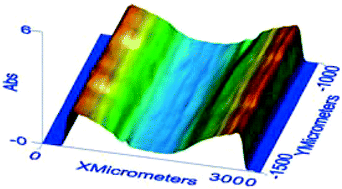The preparation of novel blends of Ultra High Molecular Weight Polyethylene with polymethacrylate based copolymers using supercritical carbon dioxide
Abstract
Supercritical carbon dioxide (scCO2) was utilized to impregnate

* Corresponding authors
a
University of Nottingham, University Park, Nottingham, NG7 2RD, UK
E-mail:
steve.howdle@nottingham.ac.uk
Fax: +44 (0)115 9513058
Tel: +44 (0)115 9513486
Supercritical carbon dioxide (scCO2) was utilized to impregnate

 Please wait while we load your content...
Something went wrong. Try again?
Please wait while we load your content...
Something went wrong. Try again?
A. Naylor and S. M. Howdle, J. Mater. Chem., 2005, 15, 5037 DOI: 10.1039/B508289G
To request permission to reproduce material from this article, please go to the Copyright Clearance Center request page.
If you are an author contributing to an RSC publication, you do not need to request permission provided correct acknowledgement is given.
If you are the author of this article, you do not need to request permission to reproduce figures and diagrams provided correct acknowledgement is given. If you want to reproduce the whole article in a third-party publication (excluding your thesis/dissertation for which permission is not required) please go to the Copyright Clearance Center request page.
Read more about how to correctly acknowledge RSC content.
 Fetching data from CrossRef.
Fetching data from CrossRef.
This may take some time to load.
Loading related content
